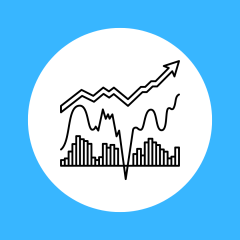Market Capture
The category of market capture refers to any capacity for corporations to develop market power or restrain market competition. The building of monopolistic capacity through cartel agreements, mergers and acquisitions, cooperation agreements or through specific forms of corporate structures (trusts, holdings, conglomerates) are the main elements that could be included under that category.
Cartels abounded in the 1930s, but declined after the Second World War. From 1955 to 1985, the US Department of Justice discovered only a few cases of international price-fixing agreements, including a case of price-fixing in antibiotics, and between 1985 and 1994 no cases were discovered. Since 1994, a cartel revival was observable: 20 international cartels were found. Two of those cartels were active in the pharmaceutical industry: one in lysine (an essential amino acid), which managed to increase world lysine prices by 70%, and another in vitamins (Connor, 2008). In fact, it was the discovery of the cartel in lysine that encouraged antitrust authorities to open investigations in other sectors. The investigations of the lysine cartel revealed how easy it was to organize a price-fixing agreement, and created a public uproar by exposing the sharp disdain such firms had for their customers. For example, in an FBI tape of one session of the cartel investigation, ADM’s president and lysine cartel leader, James Randall, explains: “We have a saying in our company: Our competitors are our friends, our customers are the enemy” (Gagnon, 2009).
Such “traditional” price-fixing agreements remain officially illegal according to competition policies in most industrialized countries: they are normally prosecuted by law, and should not be considered central within the structure of corporate capitalism. However, other strategies, like mergers and acquisitions or cooperation agreements are central to market capture.
With more than $2.5 trillion in deals announced worldwide, 2018 was set to become a record year for the value of corporate mergers and acquisitions (Grocer, 2018) while 2019 was expected to be a record year for mergers and acquisitions in the pharmaceutical sector (Grocer, 2019). Mergers and acquisitions are a typical case of goodwill creation that does not increase production capacity. For example, in the case of pharmaceuticals, mergers and acquisitions are often used to slash spending in research and development. As the Economist (2014) explains: “Some in Wall Street see pharma research as value-destroying and an obvious target for cuts.” In a nutshell, the destruction of innovation capacity in the pharmaceutical sector is considered as an excellent way to build the intangible assets for the shareholders.
Collaboration agreements between companies are becoming very important, especially in knowledge-based sectors. In the pharmaceutical sector, it was found that among the 16 largest pharmaceutical companies worldwide at least 82 collaboration agreements existed in 2008, which means that each dominant firm had on average more than ten cooperation agreements with other dominant firms (Gagnon, 2009). In 2017, by using the Cortellis database, it was possible to identify 296 collaboration agreements between the 13 largest companies. This shows that the sector is organized less like a competitive market and more like a network of cooperation. Market competition in the pharmaceutical sector becomes an elusive concept when compared to the reality of organized systematic cooperation. While there is no official cartel agreement, we find ourselves confronted with the multiplication of quasi-cartel agreements, which results in the same impact − increased monopolistic capacities as a form of intangible assets.
References
Connor, J. M. (2008). Global Price Fixing: Our Customers are the Enemy (2nd ed.). Springer-Verlag.
Gagnon, M.-A. (2009). The Nature of Capital in the Knowledge-Based Economy: The Case of the Global Pharmaceutical Industry [Ph.D.]. York University.
Grocer, S. (2018). A Record $2.5 Trillion in Mergers Were Announced in the First Half of 2018. New York Times (Online).
Grocer, S. (2019, February 28). Big Pharma’s Hunt for New Drugs Is Pushing Up Cost of Deals. The New York Times. https://www.nytimes.com/2019/02/28/business/dealbook/pharmaceutical-biotech-acquisitions.html
The Economist. (2014, November 15). Invent it, swap it or buy it; Pharmaceutical M&A. The Economist, 413(8913), n/a.
